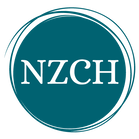|
Homie - o - what?
HOMEOPATHIC MEDICINE is natural medicine that has a high quality evidence base (randomized controlled trials and meta-analyses) for the treatment of Diarrhoea[1] and Ear infections in children;[2] [3] Hay fever,[4] [5] Menopause[6] [7] and Vertigo.[8] Homeopathic medicine is a branch of medical science based on the principle that disease can be combated through strengthening the immune system with substances selected for their energy giving properties. Homeopathic medicine recognises mental, emotional and physical symptoms, and has a systematic way of utilizing a symptom via a rubric. A rubric is a clinically verified symptom found in the repertory -an index of homeopathic medicines by symptom. Repertorization, the process of translating symptoms into clinically usable data, is a scientific, systematized standard unique to homeopathic medicine. Homeopathic medicines are prescribed in accordance with clinically verified symptoms - repertorization - not on the indication that X medicine is known to assist with X condition so therefore might help Mr X’s problem – which is standard practice in all other systems of medicine. Homeopathic medicine is patient-centric. For example, four year old triplets Tim, Tommy and Tony were diagnosed with chronic diarrhoea. Tim had diarrhoea, extreme weakness and believed he would die; Tommy experienced a rumbly tummy with gushing, painless, foul diarrhoea while Tony had become a very angry child with frothy, watery diarrhoea and severe abdominal pains. After repertorization, Tim would be prescribed Ars; Tommy Podo; and Tony Coloc; three different homeopathic medicines even though chronic diarrhoea was the diagnosis, because each child was suffering in his own, individual way. Homeopathic medicine is prescribed using a systematized, scientific method which translates symptoms into clinically verified rubrics, creating usable data to identify the specific homeopathic medicine for an individual’s mental, emotional and physical symptoms / sufferings. Homeopathic medicines are inexpensive and, with a few exceptions, not patented. In Australia, always seek the services of a homeopath registered with AROH. REFERENCES [1] https://www.ncbi.nlm.nih.gov/pubmed/12634583 Homeopathy for childhood diarrhea: combined results and meta-analysis from three randomized, controlled clinical trials. [2] https://www.ncbi.nlm.nih.gov/pubmed/11224838 Homeopathic treatment of acute otitis media in children: a preliminary randomized placebo-controlled trial. [3] https://www.ncbi.nlm.nih.gov/pubmed/22226309 Randomized controlled pilot study to compare Homeopathy and Conventional therapy in Acute Otitis Media. [4] https://www.karger.com/Article/Pdf/210233 A Meta-Analysis of the Homeopathic Treatment of Pollinosis with Galphimia glauca [5] https://www.ncbi.nlm.nih.gov/pubmed/2876326 Is homoeopathy a placebo response? Controlled trial of homoeopathic potency, with pollen in hayfever as model. [6] https://www.ncbi.nlm.nih.gov/pubmed/22852580 Efficacy of a non-hormonal treatment, BRN-01, on menopausal hot flashes: a multicenter, randomized, double-blind, placebo-controlled trial. [7] https://www.ncbi.nlm.nih.gov/pubmed/25768800 Individualized homeopathic treatment and fluoxetine for moderate to severe depression in peri- and postmenopausal women (HOMDEP-MENOP study): a randomized, double-dummy, double-blind, placebo-controlled trial. [8] http://www.biopathica.co.uk/Articles/Dizziness/19%20%20Vertigo%20Treatment%20with%20a%20Homeopathic%20Complex%20Remedy.pdf Treatment of vertigo with a homeopathic complex remedy compared with usual treatments – a meta-analysis of clinical trials. PHOTO CREDIT: healthyhomies.blogspot.com
0 Comments
Homeopathic medicine is just placebo right? The Australian government tells us so. But, there are high quality, randomized controlled trials (RCT’s) for conditions such as menopausal depression showing POSITIVE clinical effect for homeopathic medicine. A 2017 hospital based RCT which assessed 133 women with major menopausal depression concluded homeopathy improved menopausal symptoms when scored by the Greene Climacteric Scale. (1) (2) There are 180+ RCT’s of homeopathic medicines for a range of clinical conditions. This is how randomized controlled trials of homeopathic medicine compare to pharmaceuticals. The difference in the number of RCT’s is not surprising when we see the miniscule amount of money allocated to research into complementary and alternative medicine (CAM); just 0.03% in Australia[3] and 0.0085% in the UK [4] of the total medical research budgets. A glaring discrepancy considering two out of three Australians [5] and 15-20% of British people regularly use CAM. Evidence based pharmaceutical medicine? We all know that pharmaceutical medicines are effective, evidenced based, high quality medicines, which have been rigorously tested right? But where does this belief actually stem from when, for example, a 2017 Stanford University study revealed that just 7% of more than 60,000 clinical studies analysed passed the criteria of being high quality and clinically relevant to patients. [6]. The plot thickens when a University of Sydney research scientist and expert in pharmaceutical policy states “We’ve seen a shift internationally to the lowering of standards, especially for effectiveness, evidence, and bringing in pathways to get new drugs to market, and very limited standards of evidence, especially for some of the newer cancer drugs and rare disease drugs that are coming in.” [7] And, from the British Medical Journal ‘‘too many research studies are poorly designed or executed. Too much of the resulting research evidence is withheld or disseminated piecemeal. As the volume of clinical research activity has grown the quality of evidence has often worsened, which has compromised the ability of all health professionals to provide affordable, effective, high value care for patients.’’ [8] As informed and educated people we seek the best treatments possible for ourselves and our families but are we being told the truth when it comes to accurate and evidence based affordable, effective, high value healthcare? It would seem that this depends entirely on where you look… Pharmaceutical companies are not legally bound to sell patients the best treatment, but they are obliged to provide profit for shareholders. Between 2009 and 2014, the industry received fines totalling $13bn for criminal behaviour that included illegal marketing of drugs, hiding data on harms and manipulation of results. Interested in learning more about complementary and alternative (CAM) medicine? A great CAM initiative is the Your Health Your Choice campaign, providing up to date news and information where you can also sign up to express dissatisfaction with the current Australian CAM conundrum to our politicians. A bit more on evidence; Due to complaints of scientific misconduct, the leaked 2015 Australian NHMRC homeopathy report concluding no evidence for homeopathy has sat before an ombudsman for over two years…The 2015 report is actually the second version – the first homeopathy report of 2012 was buried - its findings remaining hidden from the Australian tax payers who funded it. (9) Homeopathy improves menopausal symptoms when tested against placebo. This statement is referenced below by two randomized controlled trials (RCT’s); Menopausal hot flashes: a multicenter, randomized, double-blind, placebo-controlled trial. (10) A study of one hundred and eight menopausal women concludes that BRN-01 (a registered homeopathic medicine) seemed to have a significant effect on the HFS (Hot Flash Score), compared with placebo. According to the results of this clinical trial, BRN-01 may be considered a new therapeutic option for hot flashes in menopausal women who do not want or are not able to take hormone replacement therapy or other recognized treatments for this indication. Individualized Homeopathic Treatment and Fluoxetine for Moderate to Severe Depression in Peri- and Postmenopausal Women (HOMDEP-MENOP Study): A Randomized, Double-Dummy, Double-Blind, Placebo-Controlled Trial. (1) A study of one hundred and thirty three menopausal women with major menopausal depression found Homeopathy and fluoxetine are effective and safe antidepressants for climacteric women. Homeopathy and fluoxetine were significantly different from placebo in response definition only. Homeopathy, but not fluoxetine, improves menopausal symptoms scored by Greene Climacteric Scale. Homeopaths acknowledge that the body of evidence for homeopathic medicine is small but growing and much more research needs to happen. To find out more about homeopathic medicine for menopausal symptoms contact your local registered homeopath . Need support or information around depression and anxiety, for yourself, a friend or family member in Australia?
Lifeline 13 11 14 Lifeline Crisis support chat (7pm-midnight AEDT only) In emergencies always call 000 Gut health & Homeopathy. Dysbiosis - a clinical study. Outpatients aged from 4 to 72 suffering from gastrointestinal disturbances, such as constipation and diarrhoea, were enrolled in this 2017 study. 69.6% showed some type of improvement, while 26% of patients showed major improvement or eradication of symptoms. These results suggest that homeopathic medicine could possibly be a useful method for controlling gastrointestinal disturbances. [1] Homeopaths acknowledge that the body of evidence for homeopathic medicine is small but growing and much more research needs to happen. The homeopathic medicines used in this study were bowel nosodes. The source materials for the bowel nosodes are certain groups of bacteria found as part of the bacterial flora of the human intestine in states of ill health; human gut microbiota. Since the 1920’s Homeopaths have observed the connection of bacterial flora of the human intestine in particular states of ill health and at specific stages of the disease process and utilized bowel nosodes as medicines to treat chronic disease. In 1925 Dr Bach, a bacteriologist and physician at the Royal London Homeopathic hospital, along with Dr Wheeler, published Chronic Disease a Working Hypothesis in which chronic disease was held to be caused by the absorption of toxins from the bowels to a greater or lesser degree depending upon the permeability of the individual’s intestinal mucosa. Homeopathic philosophy, theory and practice has a more complex, evolved understanding of health and disease. What is dysbiosis? Dysbiosis means microbial imbalance. Dysbiosis is most prominent in the digestive tract and on the skin, but can be found on any exposed surface or mucous membrane, such as the vagina, lungs, mouth, nose, sinuses, ears, nails or eyes. Dysbiosis of the gut microbiota is associated with intestinal and extra-intestinal disorders. Intestinal disorders include irritable bowel syndrome (IBS), and coeliac disease. Extra-intestinal disorders include allergy, asthma, heart disease, and obesity. Gastrointestinal disturbances such as Chron’s disease, colitis and gastritis are often among the symptoms commonly reported by individuals’ diagnosed as suffering from chronic diseases, such as inflammatory bowel disease, autism, and chronic fatigue syndrome. In many conditions of dysbiosis, disease development involves the mutual relationship between the gut microbiota and the immune system. Dysbiosis has multi layered causations[2] not just the overgrowth or absence of microorganisms. Microorganisms are an unchartered world of major importance (survival) to us and all other larger organisms living on planet Earth. Impressively, the average adult human is comprised of over 100 trillion cells! Even more impressive is that of our 100 trillion cells only 37.2 trillion[3] are human…The other trillions are bacteria, fungi, viruses and parasites. We are outnumbered in our own bodies 3:1! Homeopathic medicine is not out to kill microbes but aims to help us to live in better harmony within ourselves, our surroundings and the world of microorgansims. What is homeopathic medicine? Homeopathic medicine is a branch of medical science based on the principle that disease can be combated through strengthening the body’s defense mechanism (immune system) with substances selected for their energy giving properties. Homeopathic medicines are complimentary meaning they can be taken alongside conventional medications; simple to administer and gentle enough for young children too. Most importantly, homeopathic medicine aims to improve the body’s energy levels which homeopaths know to lie at the root of sickness and disease. Sarah Penrose's peer reviewed paper Drugs, Dysbiosis and the Bowel Nosodes examining nine cases of resolved gut disturbance was published in Similia, The Australian Journal of Homeopathic Medicine (Vol. 31, No. 1) in June 2019. The TGA is presently reviewing the regulation of ‘low risk’ complementary medicines (vitamins, minerals, homeopathic & aromatherapy products). But first a bit of background... As part of the Department of Health, the TGA safeguards and enhances the health of the Australian community through effective and timely regulation of therapeutic goods. Therapeutic goods include prescription medicines, vaccines, sunscreens, vitamins and minerals, medical devices and blood and blood products; The TGA is responsible for regulating the supply, import, export, manufacture and advertising of all therapeutic goods in Australia. In relation to homeopathic products, the TGA bases its preferred option to declare them ‘non therapeutic goods’ (and hence deregulate them) on the basis of the flawed 2nd 2015 NHMRC homeopathy report presently before an ombudsman due to complaints of bias & misconduct in research; while ignoring all other evidence and consumer and stakeholder opposition. The 1st 2012 homeopathy review was buried, its findings, cost and very existence kept secret… The NHMRC is Australia's premier public institution responsible for informing the community on matters relating to health. Its mission is, "Working to build a healthy Australia". The NHMRC, as a tax-payer funded institution, has a duty to the public to ethically, impartially and accurately inform it of evidence to support our healthcare choices. Around 70% of Australians use some form of complementary medicine service and/or product each year to complement their healthcare needs. Between 2005 and 2015, the NHMRC spent only $2.3 million (0.03%) on complementary medicine research and over $6.7 billion on research into conventional medicine - despite 2 in 3 Australians use complementary medicine services and products. In 2016 The Review of the Australian Government Rebate on Private Health Insurance for Natural Therapies (the 'Natural Therapies Review'), published - conducted by the NHMRC on behalf of the Department of Health, the NTR determine whether or not natural therapies should continue to attract the Australian Government Rebate on private health insurance. Natural Therapies Review includes popular, widely used modalities such as naturopathy, herbal medicine, yoga, pilates, tai chi, massage (all forms), homeopathy, aromatherapy, Ayurvedic medicine, kinesiology, reflexology, Bowen therapy and others. The NHMRC reviews concluded there was no 'reliable' or 'clear' evidence that any of the 17 natural therapies assessed were effective - contrary to the experience of the millions, 2 out of 3, Australians that have used these therapies; and inconsistent with the growing body of good quality, positive research underpinning these therapies. In the 2016 Natural Therapies review, NO original research papers were retrieved or assessed. What does this mean? Basically the 2 out of 3 Australians who use some form of complementary medicine are being ignored by the health department and will be left unprotected by the TGA if the proposed deregulation of ‘low risk’ complementary medicines (vitamins, minerals, homeopathic & aromatherapy) products are made. The deregulation of essential oils means what? It would mean the manufacturers of everyday essential oils used by millions of Australians (including Tea Tree oil) will be unable to state what purpose the oils can be used for – only general relaxation style claims would be allowed. Control over manufacturing quality and post market surveillance of adverse events would be abandoned – placing public safety at risk… If adopted, the deregulation of essential oils would also have a major impact on Australian export markets, resulting in job losses and lower quality products flooding the market having a devastating effect on the aromatherapy industry in Australia. Deregulation of essential oils will mean our communities will be denied access to high quality essential oil products for everyday ailments. What can you do?
SIGN UP to YOUR HEALTH YOUR CHOICE Via the YHYC campaign, the natural medicines sector is liaising with the Health portfolio and Minister to ensure TGA listens to industry, practitioners and consumers to maintains the current regulatory status as at present 2 out of 3 Australians are being ignored. EDUCATE - contact the companies and people you purchase your essential oils from to ask them what they are doing about this and how you as a consumer will be effected when deregulation takes place. SPREAD THE WORD - to your customers, friends and family to inform them of what is going on in Australian right now under our noses. 2 out of 3 Australians is extremely powerful and we will be listened to when our energies are directed into the right channels which is the YOUR HEALTH YOUR CHOICE campaign. Concluding on a positive note – thanks to the YOUR HEALTH YOUR CHOICE campaign popular natural treatments used to manage hay fever, stress, insomnia, joint aches, teething, and other medical conditions continue to be sold in pharmacies. The King Review which suggested banning homeopathic products and placing restrictions on the sale of other complementary medicine products in pharmacies was thrown out due to the 80,000 consumer protests voices heard via the YHYC campaign. What you want matters so make sure your voice is heard! Leaving the doctor's office with a script for antibiotics which might not be needed is contributing to the global problem of resistance to antibiotics. Antibiotic resistance happens when bacteria change or mutate to protect themselves from an antibiotic. Mutated bacteria can also pass their genes to other bacteria, forming a new antibiotic resistant ‘strain’ of that bacteria. (1) A 5 YEAR Australian report released in 2017 found that antibiotics are prescribed for acute respiratory infections at rates of 4–9 times higher than those recommended by our national clinical guidelines. (2) If Australian doctors were to start prescribing antibiotics along these national guidelines, the number of pills handed out for some conditions would fall by nearly 90 per cent. Also in 2017, WHO (World Health Organisation) released a report confirming that the world is running out of antibiotics. (3) This report found that most of the antibiotics currently in use are modifications of existing antibiotics and are only short-term solutions. The report also found very few potential treatment options for antibiotic resistant infections identified as posing the greatest threat to human health, such as drug-resistant tuberculosis which kills around 250 000 people every year. In addition, WHO identified 12 classes of priority pathogens – some of which cause common infections such as pneumonia or urinary tract infections – that are increasingly resistant to existing antibiotics and urgently in need of new treatments. Antibiotics have been in use for 70 years and undoubtedly have saved millions of lives. However, during the last 50 years just one antibiotic that works in a new way has been discovered and developed for use in humans. One! (4) The time it takes for bacteria to become resistant to antibiotics is getting shorter. We NEED to change the way we are using antibiotics. NPS medicine wise is an independent Australian, not-for-profit and evidence-based organisation that works to improve the way health technologies, medicines and medical tests are prescribed and used. Australians are over-using antibiotics. Australia is the eighth highest user of antibiotics out of 28 European countries. In 2015, Australian doctors prescribed more than 30 million antibiotic scripts through the Pharmaceutical Benefits Scheme. Antibiotic resistance is already impacting our health. Antibiotic-resistant infections are not just seen in hospitals, agriculture or countries overseas, and they are not a future problem. Antibiotic resistance already affects individuals in Australian communities. Infection with antibiotic-resistant bacteria means longer stays in hospital and a higher death rate. If you have an infection caused by bacteria resistant to antibiotics you are more likely to die from that infection. In Australia, the prevalence of multi-resistant bacteria (‘superbugs’) is increasing with more & more patients getting infections which are resistant to multiple antibiotics. Examples of superbugs in our communities which have already developed resistance to a number of antibiotics include strains of Escherichia coli (E coli) that cause many urinary tract infections and ‘Golden staph’, a common cause of skin infections. Failure of the last-resort antibiotic treatment for the sexually transmitted infection gonorrhoea is now also occurring in Australia. (5) What can we do? According to the World Health Organisation, antibiotic resistance is one of the biggest threats to human health today. What you do as an individual has a real impact on antibiotic resistance. This is a problem we can have control over. Actions we take as individuals can make a difference, because the more antibiotics are used, the more chances bacteria have to become resistant to them which is already making bacterial infections much harder to treat. Again, (E coli) that causes many urinary tract infections and Golden staph, a common cause of skin infections. There are five things you can pledge to do to reduce antibiotic resistance:
Also, I encourage you to think about the origin of the foods you are buying. Feed your family, certified organic where possible which in Australia means no antibiotics are used to grow the fruit, veg and meat products. Lessening the consumption of antibiotics. Green snot doesn’t mean you need antibiotics Coloured mucous or phlegm isn’t always a sign of a bacterial infection, and that also goes for other symptoms including cough, sore throat, earaches and fever. While some people with these symptoms will need antibiotics, most people won’t and will get better without antibiotics. Green or yellow coloured snot can in fact be a sign that your immune system is fighting the infection, and not that the illness is getting worse. (6) Don’t share antibiotics with another person. This is important because the type of antibiotic may not be targeted to the bacteria causing their particular infection. Antibiotic resistance can have personal consequences for you, your family and the community. Antibiotic-resistant bacteria can persist in your body for as long as 12 months and may be passed on to family members or others in the community. Can complimentary medicine can play a role in reducing antibiotic resistance? Researchers led by the University of Bristol collected data from over 7,000 GP clinics and compared it with nine clinics where GPs integrated complimentary medicine in their daily practice. Analysis showed that practices which employed GPs with additional training in complementary medicine, such as homeopathy, prescribed 22% fewer antibiotics. (7) A common misconception in that there is no evidence for homeopathic medicine – this is just not true! It’s true to say that there are not a huge number of studies, but some evidence is very different from no evidence. By the end of 2014, 189 randomised controlled trials of homeopathy on 100 different medical conditions had been published in peer-reviewed journals. Of these, 104 papers were placebo-controlled and were eligible for detailed review. (8),(9) Homeopaths acknowledge that the body of evidence for homeopathic medicine is small but growing and much more research needs to happen. Homeopathic medicine has been in use for over 200 years without a single microbe becoming resistant to it. Why? Because homeopathic medicines aim to strengthen the person against the bacteria or virus; a stronger person being more resilient to recurring infection. Homeopathic medicine is legally recognized as a distinct system of medicine in 42 countries. Argentina, Brazil, England, Ghana, India, Mexico, Pakistan and Scotland all have Homeopathic hospitals integrated into their Healthcare systems. (10) It is estimated that there are over 350,000 qualified medical doctors prescribing Homeopathic medicine worldwide and 200,000,000 people using Homeopathic medicine. Homeopathic medicine is not a one size fits all over the counter prescription. It needs to be skillfully prescribed for the symptoms the person is suffering not for the name of the disease or condition. HRH The Prince of Wales's speech to the Global Leaders Conference on Antimicrobial Resistance. An excerpt...''Ladies and Gentlemen, I really am delighted to have had a brief opportunity to meet many of you just now and would like to commend you on your strenuous efforts – at long last – to address the grave threats to health posed by antimicrobial resistance. As some of you may possibly be aware – maybe not - this issue has been of long standing and acute concern to quite a few people, including myself (in fact, it was one of the reasons I converted my farming operation to an organic – or agro-ecological – system over thirty years ago, and why, incidentally, we have been successfully using homeopathic – yes homeopathic - treatments for my cattle and sheep as part of a programme to reduce the use of antibiotics). So, I take great heart from the fact that Ministers, officials and scientists of such eminence and from so many countries are putting their collective minds to the development of a concerted course of action.'' (11) REFERENCES
1. https://www.nps.org.au/medical-info/consumer-info/antibiotic-resistance-the-facts?c=bacteria-become-resistant-to-antibiotics-not-your-body-9e5685a3 2.https://www.mja.com.au/journal/2017/207/2/antibiotics-acute-respiratory-infections-general-practice-comparison-prescribing 3. http://www.who.int/mediacentre/news/releases/2017/running-out-antibiotics/en/ 4.https://www.nps.org.au/medical-info/consumer-info/antibiotic-resistance-the-facts?c=the-drug-pipeline-for-antibiotics-is-drying-up-d81a6b23 5.https://www.nps.org.au/medical-info/consumer-info/antibiotic-resistance-the-facts?c=antibiotic-resistance-is-already-impacting-our-health-37c45430 6.https://www.nps.org.au/medical-info/consumer-info/antibiotic-resistance-the-facts?c=green-snot-doesn-t-mean-you-need-antibiotics-f91ee557 7.http://bmjopen.bmj.com/content/8/3/e020488 8.facultyofhomeopathy.org/research/ 9.https://www.hri-research.org/resources/homeopathy-faqs/there-is-no-scientific-evidence-homeopathy-works/ 10. drnancymalik.wordpress.com/article/status-of-homeopathy/ 11.www.princeofwales.gov.uk/speech/hrh-prince-waless-speech-global-leaders-conference-antimicrobial-resistance We need to talk about essential oils! Did you know that just 2ml of eucalyptus oil is enough to cause severe poisoning in a child? (1) and that ingestion of essential oil has only been ‘a thing’ since the very recent rise of multi-level marketing companies. Essential oils have been used for over 6000 years. (2) In my clinic I am seeing an exponential rise in ‘injury’ from ingestion and incorrect topical application of essential oils in children and adults. The Western Australian Poisons Information Centre (WAPIC) has recorded an increase in poisonings as a result of essential oil ingestions in children. (3) Most people mean well and want the very best for their children, family and friends however, I can’t imagine you would take medical advice from your shoe salesman nor ask your cleaning lady to file your tax returns!
Why accept medical advice for chronic and complex medical conditions such as eczema from a sales person with the best intentions but no formal training, qualifications or even a basic understanding of organic volatile compounds, contraindications and cytotoxicity of essential oils? What are symptoms of essential oil toxicity? Essential oils are rapidly absorbed orally and symptoms can develop as quickly as 30 minutes after ingestion (some individuals experience delayed symptoms up to 4 hours after exposure). The severity of toxicity is dependent on the type of oil and the amount ingested. (4) Children are particularly susceptible. As little as 2mL (less than half a teaspoon) of eucalyptus oil can cause significant poisoning in an infant. Symptoms of toxicity include:
Who can I call for help?
In Australia, only ‘Suitably qualified practitioners may prescribe the ingestion of essential oils providing the essential oils are combined with other non-essential oil ingredients which are included for therapeutic use and product is listed or registered on the TGA ARTG. The prescribed level of essential oil should be regarded as safe. That is the level of prescribed oil should be less than the maximum levels established by the Australian National Drugs and Poisons Scheduling Committee.’’ (5) For more information on the safe use of essential oils can be found here https://www.iaama.org.au/about-aromatherapy.html#essential-oil-safety The IAMMA are a not for profit! No profit in mind… And, as always seek professional advice! Australian registered aromatherapists can be found here http://www.ifaroma.org/us/find-an-aromatherapist/ And here https://www.myhealth1st.com.au/?skin=branded-atms and here http://www.australiannaturaltherapistsassociation.com.au/practitioners/find_health.php?S=&Therapy=Aromatherapy 1 https://www.rch.org.au/clinicalguide/guideline_index/Eucalyptus_Oil_Poisoning/ 2 http://www.atms.com.au/aromatherapy/ 3, 4 http://healthywa.wa.gov.au/Articles/A_E/Essential-oils 5 http://www.atms.com.au/membershipold/professional-conduct/ The poisons record is a record of decisions regarding the classification of medicines and chemicals into Schedules for inclusion in relevant legislation of the states and territories; www.tga.gov.au/publication/poisons-standard-susmp Most physicians and other healthcare professionals are unaware of the pervasiveness of poor quality clinical evidence that contributes considerably to overuse, underuse, avoidable adverse events, missed opportunities for right care and wasted healthcare resources. In his paper How To Survive the Medical Misinformation Mess, Stanford University professor of medicine and statistics John Ioannidis, an authority on scientific integrity, reveals only 7% of more than 60,000 clinical studies analysed passed criteria of being high quality and clinically relevant to patients. We should also be concerned about the very integrity of medical research on which doctors rely to make clinical decisions. In an international survey of respondents from higher education institutions, 14% admitted to knowing of a colleague who fabricated, falsified or modified data and 34% of scientists report questionable research practices that included selective reporting of clinical outcomes in published research and concealing conflicts of interest. During a recent keynote lecture at the British Association for Cardiovascular Prevention and Rehabilitation annual conference, I** gave the example of a man who had had a heart attack and been given statins and whose months of disabling muscle pain resolved within a week of stopping taking them. His elation was cut short when his GP told him he must never stop his statin or he could die. When the audience was asked to guess what his risk of death was from stopping the pill for two weeks, the first response was 25%. There were gasps when I revealed it was actually between zero and one in 10,000. ** Such statistical and health illiteracy, far from being the exception, is actually the norm. The majority of healthcare professionals seem unable to understand medical literature. One study revealed 70% of those on a training programme failed a simple test on their understanding of evidence-based medicine. A prominent Dutch physician, whose work is alleged to have influenced European of Society of Cardiology guidelines on the use of beta blocker drugs in non-cardiac surgery, was dismissed from Erasmus University for “violations in academic integrity”, including using “fictitious data” in research. A study carried out by Darrel Francis at Imperial College estimated that these guidelines increased patient mortality by 27%, resulting in 800,000 excess deaths over eight years across Europe. The lack of the medical profession’s awareness of the true extent of biased reporting and scientific fraud is underpinned by universities’ and medical journals’ reliance on the belief that research they produce is ethical and accurate. In evidence submitted to the parliamentary science and technology committee, cardiologist Peter Wilmshurst points out they are “as likely to admit the full magnitude of research misconduct as church leaders are to confess the extent of child abuse by priests”. Pharma companies are not legally bound to sell patients the best treatment, but they are obliged to provide profit for shareholders. Between 2009 and 2014, the industry received fines totalling $13bn for criminal behaviour that included illegal marketing of drugs, hiding data on harms and manipulation of results. As pointed out in a recent BMJ editorial “few systematic changes have occurred to prevent such problems occurring again”. Earlier this year, the BBC reported on the results of a new cholesterol lowering drug for patients with heart disease, headlining the story “‘Huge advance’ in fighting world’s biggest killer”. Closer scrutiny revealed there was no reduction in death rates from heart disease, no reduction in deaths from any cause, and in European participants in the trial there was no reduction in any non-fatal heart attacks. In fact, there were 18 more deaths in patients who received the drug than those who didn’t.
The battle we face in healthcare is one of “truth versus money”, according to former editor of the New England Journal of Medicine Marcia Angell. After almost two decades editing the journal, she reluctantly concluded that it was no longer possible to trust much of the literature that was published or rely on the authority of physicians or medical guidelines. The Academy of Medical Sciences has called for greater use of medicines to prevent rather than treat disease. This will be music to the ears of the drug industry, which can exploit a market in treating chronic disease by selling more pills. Carl Heneghan, director of the Centre of Evidence Based-Medicine at Oxford University, said in response “there are too many people with conflicts of interest taking decisions about policy and the way forward”. Systemic failure to regulate against the excesses of Big Food and Big Pharma is a false economy. A 2015 report by the investment bank Morgan Stanley revealed that the failure to tackle the “diabesity epidemic” from a high-sugar diet may result in close to 0% economic growth in OECD countries by 2035. It’s estimated that 20-50% of more than $3tn of healthcare activity in the United States is inappropriate, wasting resources and/or harming patients. According to Peter Gøtzsche, co-founder of the Cochrane Collaboration, , side effects from prescription medications are the third most common cause of death after heart disease and cancer. The crisis of trust has now reached grassroots doctors and patients, with a report from the Academy of Medical Sciences revealing more than four in five GPs – and two in three members of the public – don’t trust drug company-sponsored research. Could this be a tipping point for real change to wind back the harms of too much medicine contributing to the unnecessary deaths and harm to millions across the globe?
This is a look at the situation in the UK which sounds eerily similar to what is happening in Australia. 06 May 2017 To whom it may concern. I would like to make my submission in SUPPORT of OPTIONS 1 & 2; and state my opposition to options 3 & 4. The TGA Consultation paper refers to the 2015 NHMRC Homeopathy Review. The 2015 NHMRC Homeopathy Review is presently before the Australian Ombudsman due to complaints of bias, inaccurate and highly misleading findings and therefore should not have been cited in this consultation paper.
-NHMRC said it used “standardised accepted methods” but it didn’t. -To be “reliable” NHMRC made the arbitrary decision that a trial had to have at least 150 participants and meet an unusually high threshold for quality. The NHMRC regularly funds and collaborates on trials with fewer than 150 subjects. -Investigation shows NHMRC ‘invented’ unprecedented and arbitrary rules that dismissed 171 of the 176 studies leaving 5 that were considered ‘reliable’. Of the five, one was positive for homeopathy but the NHMRC still refused to accept its findings.”
-The original Chair of the NHMRC committee, Professor Peter Brooks, was a member of the anti-homeopathy lobby group, Friends of Science in Medicine. -The NHMRC also excluded homeopathy experts from the working committee in breach of its own mandatory research standards. “The NHMRC’s job was to accurately summarise all of the evidence for homeopathy. What we ended up with was a review that was biased, ignored positive evidence and violated mandatory administrative and research standards. Not only is it bad science, it also raises major concerns regarding the validity of NHMRC reviews.” “Positive, high quality studies do exist (1), and show that homeopathy works for a number of medical conditions such as hay fever, sinusitis and cough. These studies were excluded from the findings, as were all real-world clinical studies, which consistently demonstrate the effectiveness, cost-effectiveness and safety of homeopathy in healthcare.” The NHMRC report cost taxpayers more than $800,000.
Regulatory monitoring is required to ensure public safety (e.g. adverse reaction monitoring). This includes ensuring that products sold in Australia are manufactured according to Good Manufacturing Practice. TGA’s role is to protect public safety, not make value judgments about products Australians freely choose to use as therapeutic goods. • Homeopathic Medicine is a Traditional medicine used worldwide recognized by World Health Organisation. On that basis alone it should be recognized as a therapeutic option. Under no circumstances should Homeopathy be removed as a therapeutic option. • The TGA has the ability and discretion to recognize Traditional forms of medicine and not just evidence based therefore it should continue to do so in the case of Homeopathy. • The NHMRC report set a higher standard to Homeopathy than the TGA currently use to assess efficacy and will use in the future to assess efficacy and therefore should not have been mentioned in this consultation paper as it is misleading and not relevant. • The NHMRC report is subject to a complaint to the Ombudsman and therefore should not have been cited in this consultation paper. • The UK government review cited in consultation paper was rejected by the UK Govt. and therefore should not have been mentioned to imply validity to its unaccepted conclusion. • Option 1: There is a Swiss Report on Homeopathy which stated “There is sufficient evidence for the preclinical effectiveness and the clinical efficacy of homeopathy and for its safety and economy compared with conventional treatment.” – Why is this not included in the recommendations to give perspective and balance? • Option 2: requiring scientific evidence for higher therapeutic claims will be captured in the new guidelines and should be considered. • Option 3: of exemption is completely valid if it allows for continued use with low level claims and recognition of its Worldwide Traditional use as a medicine. • Option 4: Does not recognize the use and continued endorsement of Homeopathy by governments worldwide. It is out of step with regulatory frameworks worldwide and will be contrary to the rest of the world. Australia’s close ACSS Consortium regulatory partner, Switzerland, is giving homeopathy the same status as conventional medicine by May 2017 when it comes to health insurance. The TGA consultation paper selectively excludes any mention of the Swiss situation, or the widespread inclusion of homeopathy in multiple other international jurisdictions - indicating an unbalanced approach. The TGA paper selectively excludes mention of multiple positive research published on homeopathy, including a positive Swiss Health Technology Assessment, which the TGA would have in its library. 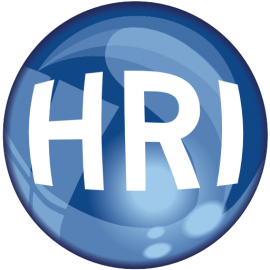 The best studies show Homeopathic medicines work (7). Homeopathic medicine Clinical trials overview By the end of 2014, 189 randomised controlled trials of homeopathy on 100 different medical conditions had been published in peer-reviewed journals: (1) Of these, 104 papers were placebo-controlled and were eligible for detailed review: 41% were positive (43 trials) – finding that homeopathy was effective. 5% were negative (5 trials) – finding that homeopathy was ineffective. 54% were inconclusive (56 trials). Meta-analyses of homeopathy trials There have been 6 meta-analyses of homeopathy: five were positive – suggesting that there was some evidence of an effect of homeopathy beyond placebo, but more high quality research would be needed to reach definitive conclusions (2),(3),(4),(5),(7) One was negative – concluding that homeopathy had no effect beyond placebo: (6) Original conclusions from the 6 meta-analyses. Developing the evidence base – progress from 2005 to 2014. The sixth and most recent meta-analysis by Mathie et al., published in 2014, found that homeopathic medicines, when prescribed during individualised treatment, are 1.5- to 2.0- times more likely to have a beneficial effect than placebo.(7) Although the previous meta-analysis by Shang et al. continues to be referred to frequently, the 2014 study by Mathie et al. includes 151 placebo-controlled randomised trials – 41 more than Shang’s team identified in 2005, but which would have met their inclusion criteria if available at the time. This demonstrates the extent to which the 10 year-old Shang et al. paper, which now covers only 73% of the eligible trials, has been superseded by the paper by Mathie et al. (7) The TGA consultation paper makes the incorrect and biased value judgment that homeopathy is ‘not evidence based’. Truthfully, Sarah Penrose Dip.Hom.Med. AROH. AHA Australian Registered Homeopath (1) Faculty of Homeopathy | http://facultyofhomeopathy.org/research/ (2) Kleijnen, J., Knipschild, P. & ter Riet, G. Clinical trials of homeopathy. BMJ, 1991; 302: 960 | https://www.ncbi.nlm.nih.gov/pubmed/1825800 (3) Linde, K. et al. Are the clinical effects of homeopathy placebo effects? A meta-analysis of placebo-controlled trials. Lancet, 1997; 350:834–843 | https://www.ncbi.nlm.nih.gov/pubmed/9310601 (4) Linde, K. et al. Impact of study quality on outcome in placebo-controlled trials of homeopathy. J. Clin. Epidemiol., 1999; 52: 631–636 | https://www.ncbi.nlm.nih.gov/pubmed/10391656 (5) Cucherat, M., Haugh, M. C., Gooch, M. & Boissel, J. P. Evidence of clinical efficacy of homeopathy. A meta-analysis of clinical trials. HMRAG. Homeopathic Medicines Research Advisory Group. Eur. J. Clin. Pharmacol., 2000; 56: 27–33 | https://www.ncbi.nlm.nih.gov/pubmed/10853874 (6) Shang A, Huwiler-Muntener K, Nartey L, et al. Are the clinical effects of homeopathy placebo effects? Comparative study of placebo-controlled trials of homeopathy and allopathy. Lancet, 2005; 366: 726–732 | https://www.ncbi.nlm.nih.gov/pubmed/16125589 (7) Mathie RT et al. Randomised placebo-controlled trials of individualised homeopathic treatment: systematic review and meta-analysis. Systematic Reviews, 2014; 3: 142 https://systematicreviewsjournal.biomedcentral.com/articles/10.1186/2046-4053-3-142 Researchers have begun linking the exponential rise in the use of glyphosphate as herbicide on core crops and the corresponding rise in the incidence in a long list of debilitating diseases and conditions. In 2014, Nancy Swanson and colleagues were the first researchers to recognize and publish an open access paper on the subject of glyphosphate and deteriorating health in America. [1] Glyphosphate is the active ingredient in Monsanto’s product Roundup© and other herbicides that kill all plants except those crops such as corn, soy, canola, alfalfa, many grains and legumes, sugar cane, wheat, oats and barley which have been genetically engineered to resist it. Around 500 products containing glyphosate have been registered for use in Australia over the past 40 years. [2] In March 2017, the European Food Safety Authority declared ‘’the available scientific evidence did not meet the criteria to classify glyphosate as a carcinogen, as a mutagen or as toxic for reproduction”.[3] Western Australia October 2016- Grain Producers Australia made an application to the Australian Pesticides and Veterinary Medicines Authority (APVMA) for a permit for emergency use of two formulations of glyphosate on barley. This permit was approved by the APVMA, Permit ≠82594 on the 2nd November 2016[4] and glyphosate treated grain is now accepted in Western Australia for Feed barley only. Feed grade barley is fed to livestock. Some livestock producers say traces of glyphosphate in their sheep, cattle or dairy products could in the very least destroy trade relationships. "Our Australian meat goes to many markets around the world and some of these countries have very tight testing regimes for residues in the meat. If feed grain has residues, it gets into the animal and then gets into the human food chain. We need to be aware that there are many countries in the world now that have banned the product (glyphosphate) completely." [5] Malta, Sri Lanka, Argentina and the Netherlands are the countries which have banned the use of glyphosphate. [6] The discovery of a potentially new toxic mechanism of glyphosphate. Recently, researchers have found that Glyphosphate may be getting into proteins by mistake in the place of Glycine – glyphosphates' ability to disrupt pathways where glycine is normally involved is believed to be part of its toxicity profile, acting as a glycine analogue. [7] Glyphosphate substitution for glycine in a protein can totally disturb the shape of the molecule. Not every protein that gets glyphosphate substituted for glycine in its peptide chain is totally wrecked by this error, however, there are hundreds if not thousands of proteins that strongly depend on glycine at certain spots in their chain to perform their job adequately. Myosin – a molecular motor in muscle is one such protein. Myosin is responsible for muscle contraction and therefore movement. In the laboratory, if only one out of every 50 myosin molecules in a muscle fibre has its glycine swapped out for alanine (an amino acid) then that muscle loses half its strength! Researchers strongly suspect that the substitution of glyphosphate for glycine in myosin and other molecular motors is a causative factor in amyotrophic lateral sclerosis (ALS) [8] and chronic fatigue syndromes. [9] One molecule predicted to be severely affected by glyphosphate substitution for glycine is collagen, the most abundant protein in the body. Collagen is essential in cushioning our joints, and when defective due to glyphosphate contamination, it does its job poorly, leading to joint pain and tendonitis, among other things. Foods that contain high amounts of gelatin can be expected to be contaminated with glyphosphate, this includes bone broths, which ordinarily are very nutritious. You can help to reduce glyphosphate exposure for your family by switching to eating the highest quality of food- wild fish, biodynamic meats, fruit and veg are best -certified organic (not organic grain fed meat!) or free ranging whenever you can. In the Pilbara we have access to some of the best fishing in the world – fish makes the most delicious & nutritious of all the bone broths. You’ll be amazed at how the regular addition of fish broth to your meals can increase your energy and make your skin glow and hair shine! Plain Fish broth recipe – Into a 5L slow cooker place 1 cut up freshly caught fish frame and head, ¼ Cup cider vinegar, a few bay leaves (to taste) and fill to capacity with the cleanest water you can get, rain or spring is best, filtered is ok. I place slow cooker outside (less odour) on low for 24 hours. Broth can be used after 6hours cooking time. Fish broth is a wonderfully flavouful & highly nutritious addition to any fish dish. Article derived in most from Stephanie Seneff, PhD. Glyphosphate in Collagen: Widespread consequences. Wise Traditions Winter 2016; 34:40. [1] http://www.organic-systems.org/journal/92/abstracts/Swanson-et-al.html Swanson NL, LEU A, AbrahamsonJ, Wallet B. Genetically engineered crops, glyphosphate and the deterioration of health in the United States of America. Journal of Organic Systems 2014; 9(2):6-37. [2] http://apvma.gov.au/node/13891 [3] https://www.theguardian.com/environment/2017/mar/15/no-cancer-risk-to-using-glyphosate-weedkiller-says-eu-watchdog [4] https://www.cbh.com.au/harvest-information/maximum-residue-limits [5]http://www.abc.net.au/news/2016-11-01/glyphosate-herbicide-crops-grain-weeds-livestock-sheep-cattle/7982524 [6] http://news.backtotheroots.com/2016/08/28/glyphosate-a-complete-list-of-all-countries-that-have-banned-it/ [7] Beecham J, Seneff S. The possible link between autism and glyphosphate acting as a glycine mimetic – a review of evidence from the literature with analysis. J Mol. Genet. Med. 2015; 9:4 [8] https://www.ninds.nih.gov/Disorders/Patient-Caregiver-Education/Fact-Sheets/Amyotrophic-Lateral-Sclerosis-ALS-Fact-Sheet [9] Seneff Stephanie, PhD. Glyphosphate in Collagen: Widespread consequences. Wise Traditions Winter 2016; 34:40. On 4 Aug 2016, the Australian Homeopathic Association (AHA),
Complementary Medicines Australia (CMA) & the Australian Traditional Medicine Association (ATMS) submitted a combined formal submission of complaint to the Commonwealth Ombudsman regarding the 2015 National Health and Medical Research Council (NHMRC) report into Homeopathy. The submission is an intensive, year-long investigation into bias, conflicts of interest, methodological flaws and procedural irregularities associated with NHMRC’s review that distorted its findings and conclusions. This is a milestone moment for Australian Homoeopathy and complimentary & Alternative medicine (CAM) in general. The industry has come together to formally ask the Ombudsman to make the NHMRC answerable for the highly questionable process it has undertaken. The Ombudsman is being asked to recommend that the report be taken down in its entirety and that NHMRC take reasonable steps to correct unjust third-party damage it has caused. No less than eight members of the skeptic group Friends of Science in Medicine were involved in the NHMRC review process, from the NHMRC Council to the NHMRC Principal Committee that guided the work, to the first Chair of the Homeopathy Working Committee, to a 2014 contractor engaged by the NHMRC. Worse, seven of these conflicts of interest were not disclosed at all; the other conflict was only partially disclosed with key details obfuscated. Stakeholders and the community expect higher standards. We hope this will represent a turning point in how government relates to the Homoeopathy and CAM sector, resulting in greater transparency and accountability within government, so that vested interest groups, such as the skeptics, can no longer distort government processes. Image taken from http://blog.ucsusa.org/francesca-grifo/five-reasons-congress-should-support-strong-conflict-of-interest-standards-at-fda |
AuthorSkilled in unravelling complex patterns of ill health, Sarah Penrose is a qualified, registered and endorsed natural health professional specializing in homeopathic medicine. Archives
December 2022
Categories |


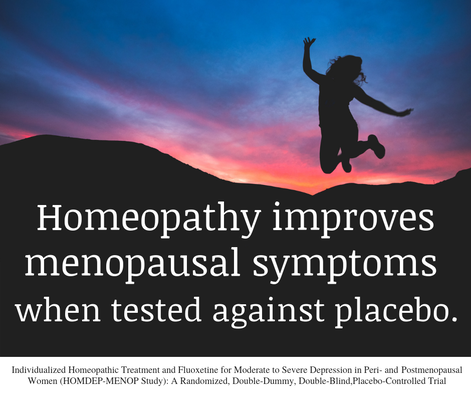
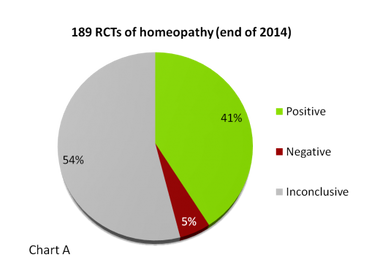
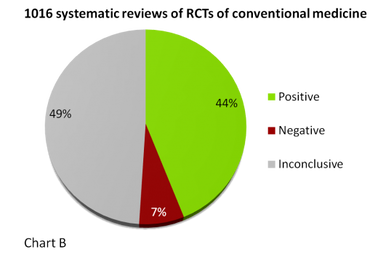
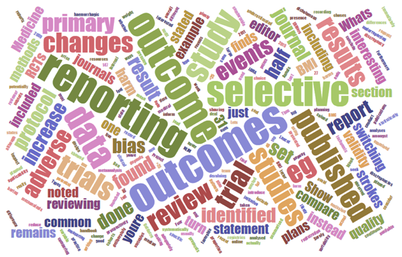
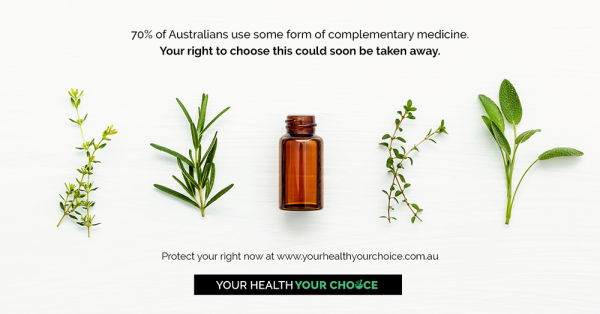
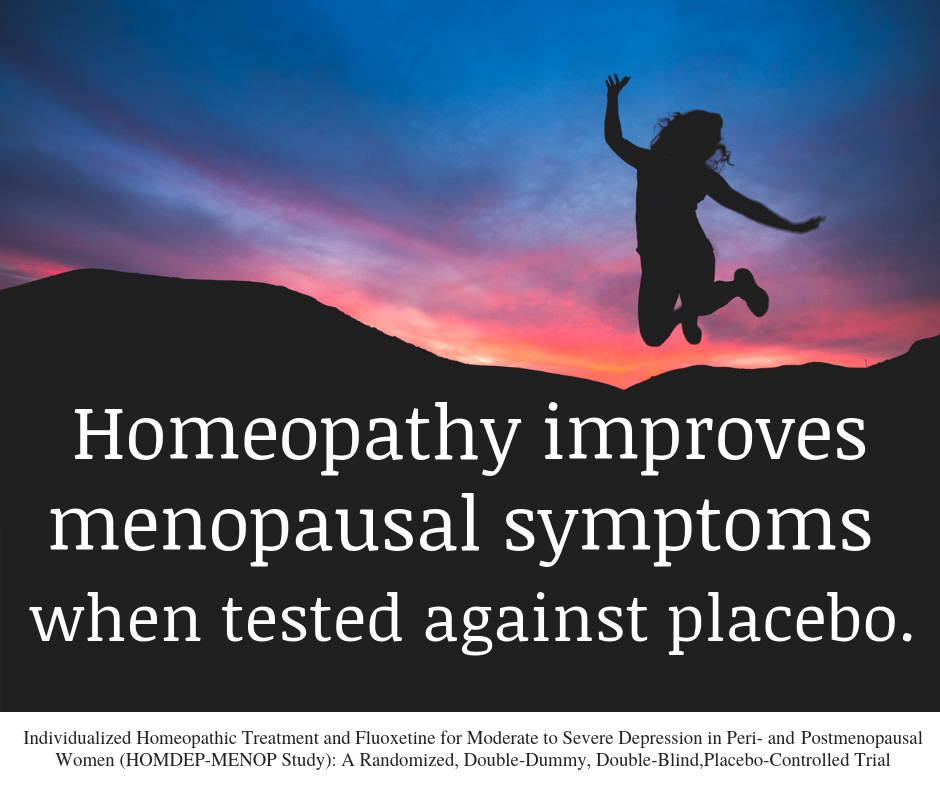
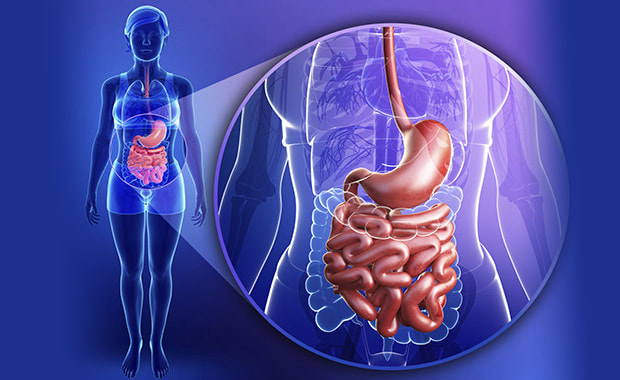
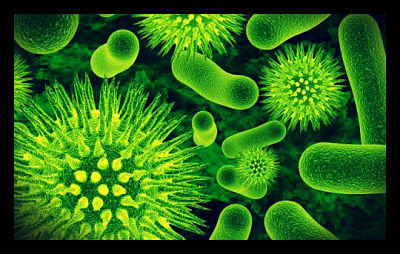
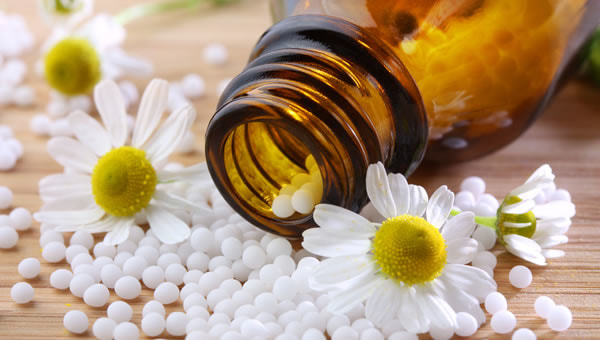
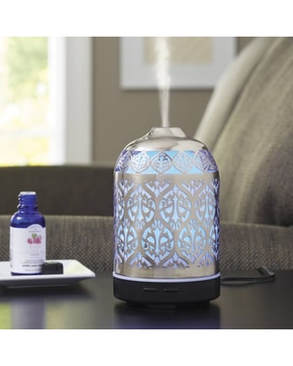
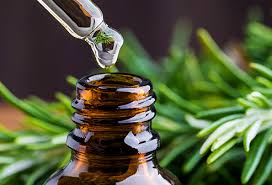
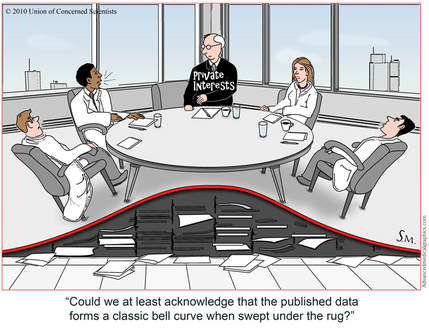
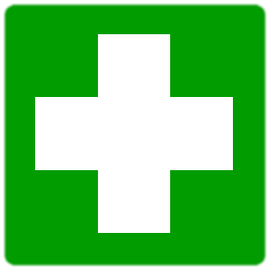

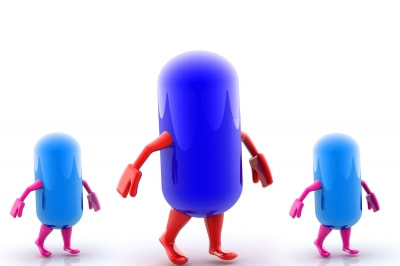
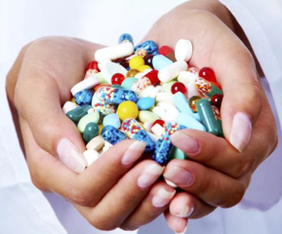
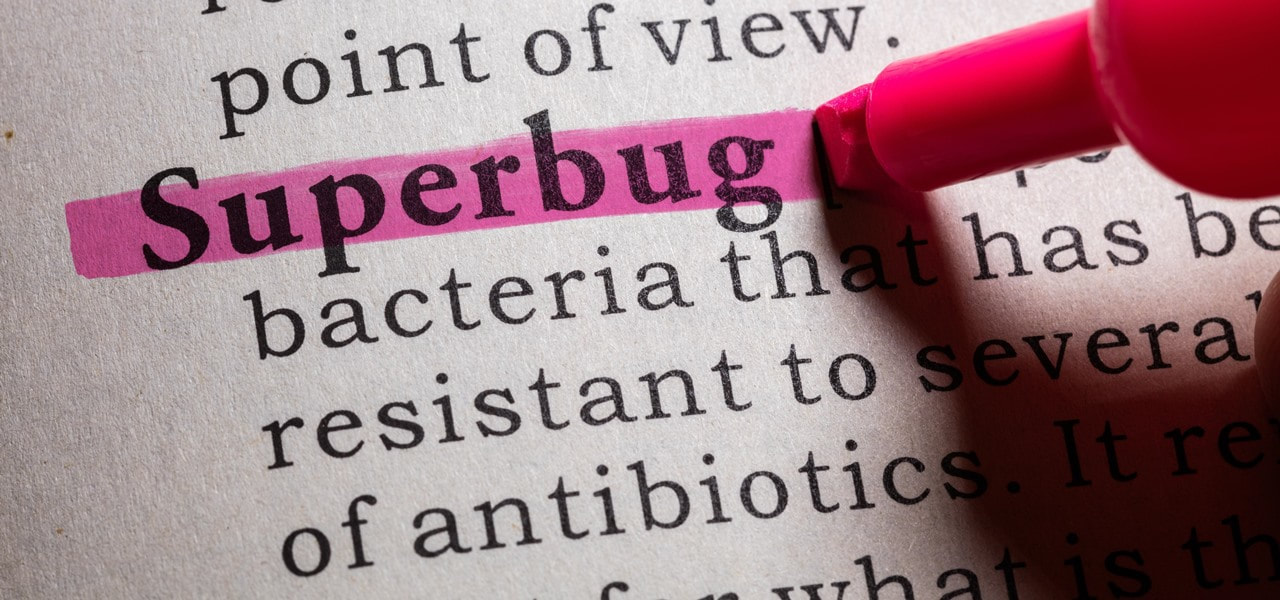
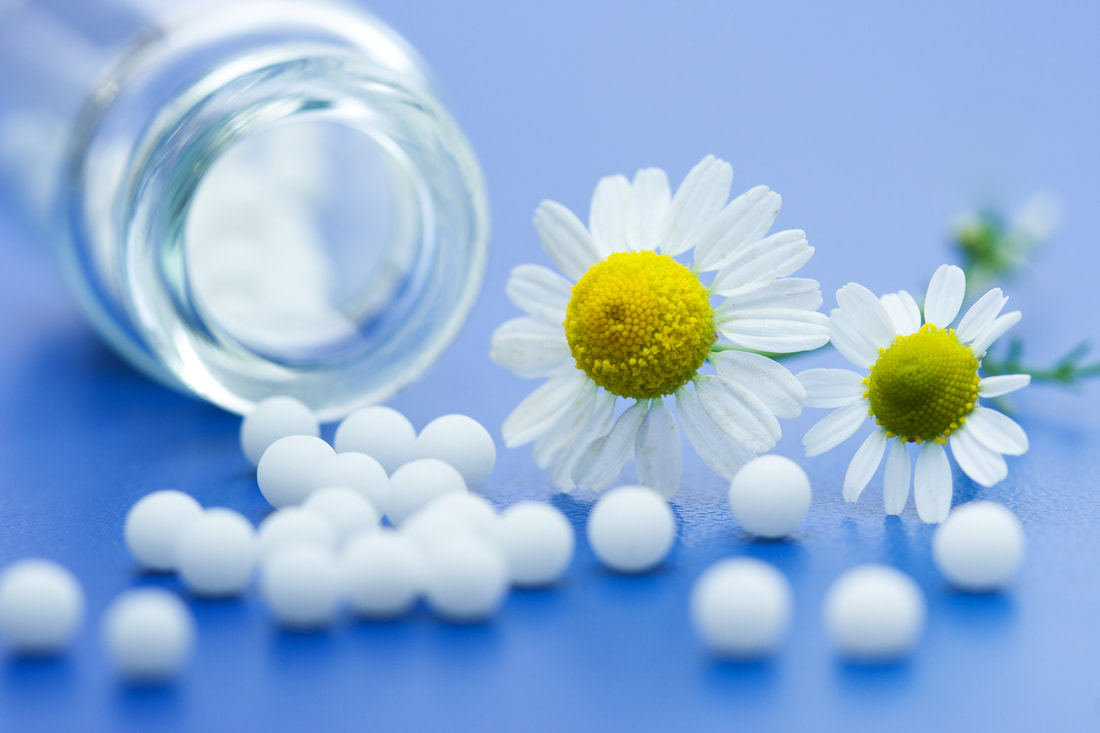
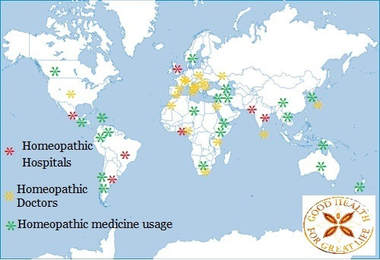
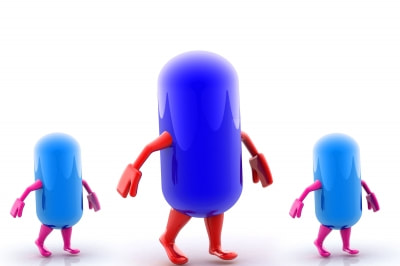
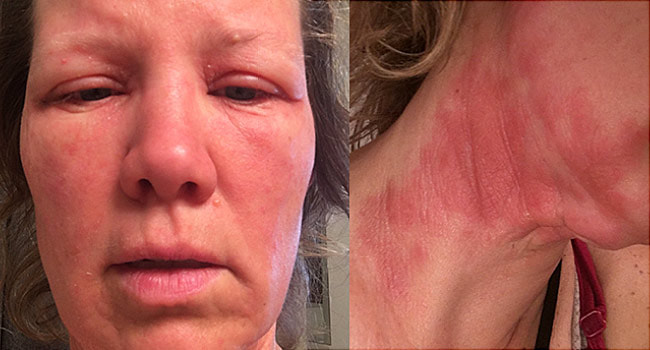

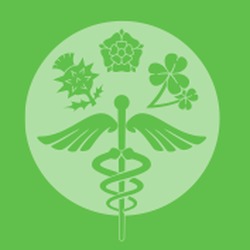
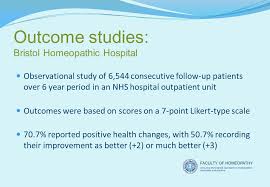

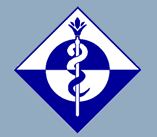

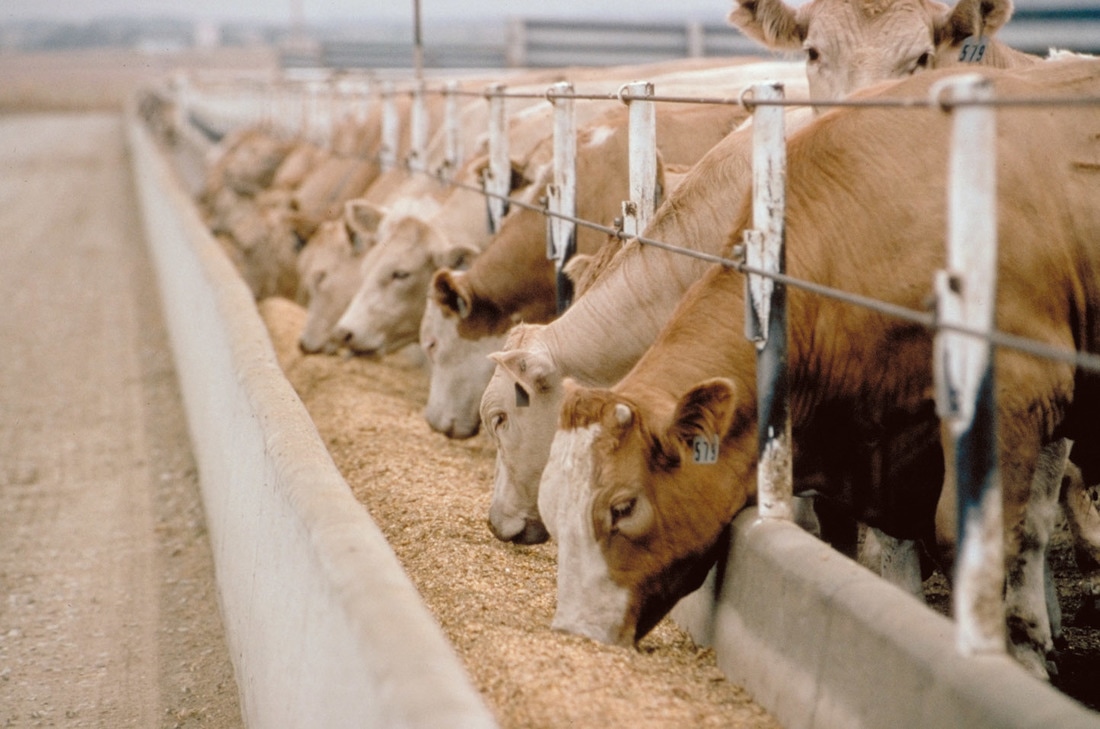
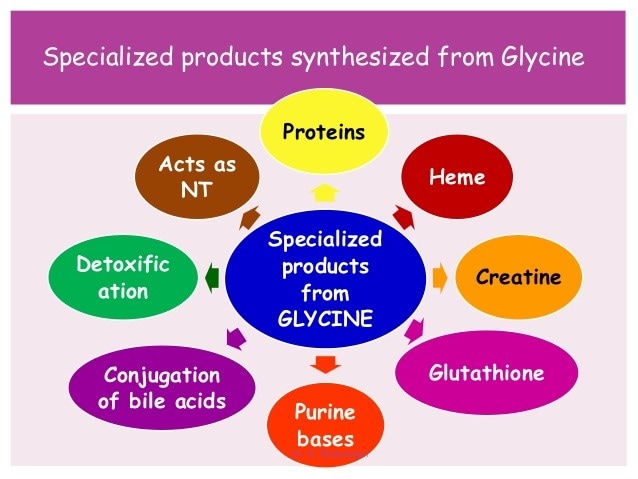



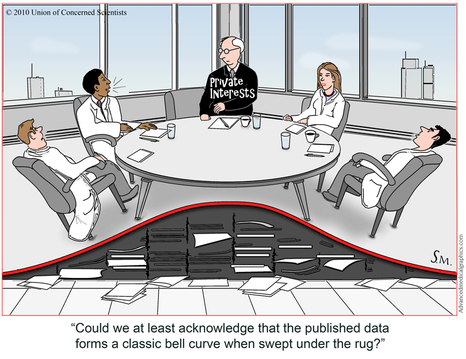
 RSS Feed
RSS Feed
